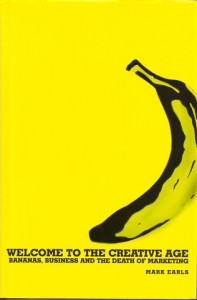The one-sentence summary
There is no point in pursuing creativity without a purpose.
- Old-fashioned marketing is dead. It used to be about selling more than the other guy, but now it is mistakenly embraced as an organisational philosophy
- Creativity is our greatest gift, but we don’t always use it effectively
- Four big things have changed the face of marketing:
1. There is too much of everything (every market is over-supplied)
2. The end of the consumer (people are confident and understand what marketing people are doing)
3. The rise of the consumer as activist
4. The demanding employee (the company man is dead)
WHAT’S GOOD ABOUT IT
- Creative Age Ideas; assume that audiences are neither listening nor interested; don’t try to fit in (in fact usually challenge); and are often the result of strongly held beliefs, not rational analysis
- These are re-named ‘Purpose Ideas’: what counts is what you want to change about the world (what is your purpose?)
- The ‘added-value banana’ anecdote, in which one is packaged as a “fresh banana snack” ideal to be eaten on the move (all of which we know already), is salutary about the insanity of much modern marketing
- The book tells you how to have ideas like this by identifying your purpose (not your positioning) and deciding on interventions (it’s what you do that counts)
- There are lots of good mantras such as “leave your agenda at the door”, ‘the brand ties you to the past”, “benchmarking yourself into a corner” and “control is an illusion we are better off without”
- There are whole chapters on why advertising people don’t know how advertising works, and how to put Purpose Ideas at the heart of a business
WHAT YOU HAVE TO WATCH
- Depending on what you do for a living, some of this might be unsettling and make the opposite of the case you desire, for example “Fact: most of the people in an ad agency are not paid to be inventive or creative but to manage and service the ad-factory machinery”
- Any book that declares the death of something has to propose new ways forward. This one only half does, by setting you thinking for yourself

